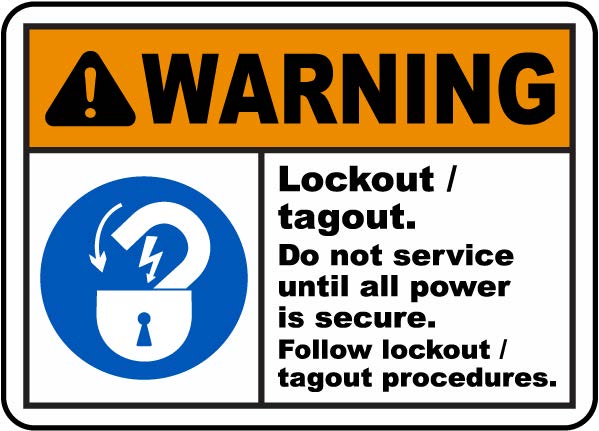By Chris Demeter, Senior Loss Control Consultant
Every year, workers are unnecessarily exposed to hazardous energy sources such as mechanical, hydraulic, pneumatic, chemical, thermal, gravity, or other energies utilized by machines in manufacturing. This occurs during servicing, maintenance, or setting up on equipment. Accidental start-up of machinery or unintended release of stored energy often presents catastrophic risks including but not limited to crush, amputation, shock, and burn injuries as well as equipment damage. This exposure can cause serious physical injuries or death to workers unaware that someone else has started a machine or energized a circuit. MIOSHA requires employers to establish a Lockout-Tagout program and use procedures for affixing appropriate lockout devices or tag out devices to energy isolating devices, and to otherwise disable machines or equipment to prevent unexpected re-energizing, start up or release of stored energy in order to prevent injury to employees.
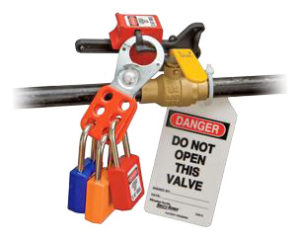 According to MIOSHA, craft workers, machine operators, and laborers are most likely to be servicing equipment and therefore are most at risk for injuries from uncontrolled energy. Federal OSHA estimates compliance with the Lockout-Tagout standard would prevent 120-fatalities and 500,000 injuries on an annual basis. According to OSHA, 24-days are the average number of days away from work to recover from an injury stemming from improper Lockout-Tagout.
According to MIOSHA, craft workers, machine operators, and laborers are most likely to be servicing equipment and therefore are most at risk for injuries from uncontrolled energy. Federal OSHA estimates compliance with the Lockout-Tagout standard would prevent 120-fatalities and 500,000 injuries on an annual basis. According to OSHA, 24-days are the average number of days away from work to recover from an injury stemming from improper Lockout-Tagout.
Key definitions under the Lockout-Tagout program:
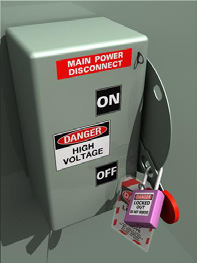 Energy isolating device: A mechanical device that physically prevents the transmission or release of energy, including but not limited to the following: A manually operated electrical circuit breaker, a disconnect switch, a manually operated switch by which the conductors of a circuit can be disconnected from all ungrounded supply conductors. In addition, no electrical pole can be operated independently, a line valve, a block, and any similar device used to block or isolate energy.
Energy isolating device: A mechanical device that physically prevents the transmission or release of energy, including but not limited to the following: A manually operated electrical circuit breaker, a disconnect switch, a manually operated switch by which the conductors of a circuit can be disconnected from all ungrounded supply conductors. In addition, no electrical pole can be operated independently, a line valve, a block, and any similar device used to block or isolate energy.
Lockout: The placement of a lockout device on an energy isolating device, in accordance with an established procedure, ensuring that the energy isolating device and the equipment being controlled cannot be operated until the lockout device is removed.
Lockout device: A device that utilizes a positive means such as a lock, either key or combination type, to hold an energy isolating device in the safe position and prevent the energizing of a machine or equipment. Included are blank flanges and bolted slip blinds.
Tagout: The placement of a tagout device on an energy isolating device, in accordance with an established procedure, to indicate that the energy isolating device and the equipment being controlled may not be operated until the tagout device is removed.
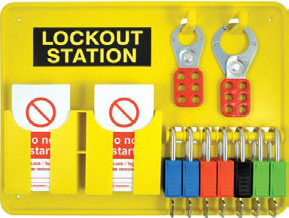 Tagout device: A prominent warning device, such as a tag and a means of attachment, which can be securely fastened to an energy isolating device in accordance with an established procedure, to indicate that the energy isolating device and the equipment being controlled may not be operated until the tagout device is removed.
Tagout device: A prominent warning device, such as a tag and a means of attachment, which can be securely fastened to an energy isolating device in accordance with an established procedure, to indicate that the energy isolating device and the equipment being controlled may not be operated until the tagout device is removed.
Affected Employee: An employee whose job requires him/her to operate or use a machine or equipment on which servicing or maintenance is being performed under Lockout Tagout, or whose job requires him/her to work in an area in which such servicing or maintenance is being performed.
Authorized Employee: A person who locks out or tags out machines or equipment in order to perform servicing or maintenance on that machine or equipment. An affected employee becomes an authorized employee when that employee’s duties include performing servicing or maintenance covered under this section. Each Authorized Employee must have and use their own locks & tags – these must be uniquely identifiable as Lockout-Tagout material and be identified to the specific worker.
Other Employees: An employee whose work operations is or may be in an area where energy control procedures may be utilized.The Lockout-Tagout standard has exceptions to where equipment is not required to be locked out. Minor tool changes and adjustments, and other minor servicing activities which take place during normal production operations. Cord and plug connected electrical equipment for which exposure to the hazards of unexpected energization or startup of the equipment is controlled by the unplugging of the equipment from the energy source. Hot tap operations involving transmission and distribution systems for substances such as gas, steam, water, or petroleum products when they are performed on pressurized pipelines.
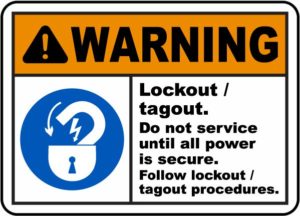 To stay compliant with the law, you must create and maintain machine-specific Lockout-Tagout procedures. Creating an effective procedure is a three-step process that includes: 1) Hazard analysis to determine the types of hazardous energy sources for each piece of equipment. 2) Identification of steps necessary to isolate and lockout that energy. 3) Creating documentation of hazard analysis results and plans to isolate and lockout energy. Effective procedures also help to facilitate lockout activity. The procedure serves as a checklist that allows workers to move quickly through the list of steps without confusion or mistakes. By making lockout activities more efficient cuts downtime and production losses, thus boosting productivity.
To stay compliant with the law, you must create and maintain machine-specific Lockout-Tagout procedures. Creating an effective procedure is a three-step process that includes: 1) Hazard analysis to determine the types of hazardous energy sources for each piece of equipment. 2) Identification of steps necessary to isolate and lockout that energy. 3) Creating documentation of hazard analysis results and plans to isolate and lockout energy. Effective procedures also help to facilitate lockout activity. The procedure serves as a checklist that allows workers to move quickly through the list of steps without confusion or mistakes. By making lockout activities more efficient cuts downtime and production losses, thus boosting productivity.
At least annually, a periodic inspection of the energy control procedures for equipment/machines involved in the Lockout-Tagout program must be performed by departments to ensure that proper procedures are being followed. The inspection should be performed by an employee other than the authorized employees utilizing the Lockout-Tagout procedure. The inspection should include a review between the inspector, authorized employees, and any other affected employees.
Once you have an effective lockout program in place, consistently reviewing it beyond the required annual inspection and performing audits are essential to identifying gaps or inconsistencies. This allows your company to focus on maintaining a successful program, instead of reacting only when something goes wrong. A sustainable Lockout-Tagout program not only helps to improve workplace safety, it also reduces costs and increases productivity.
A sample Lockout-Tagout program and templates can be found on the MTMIC client portal through our website: https://www.mtmic.com/blog Please contact Patty Allen at patricia.allen@mtmic.com/blog or 248.715.0013 for access to the MTMIC client portal. If you need guidance on developing a Lockout-Tagout program, do not hesitate to contact your Loss Control Consultant. I hope you are enjoying the milder weather and we will get ready for the hot days of summer..

